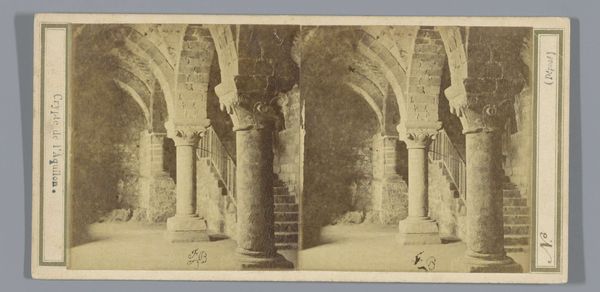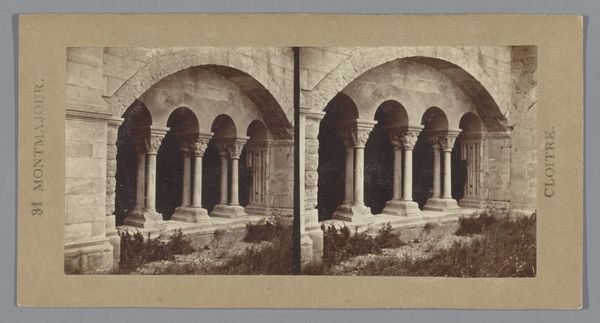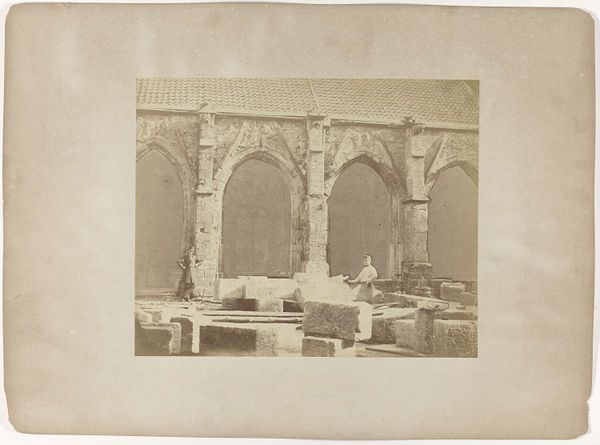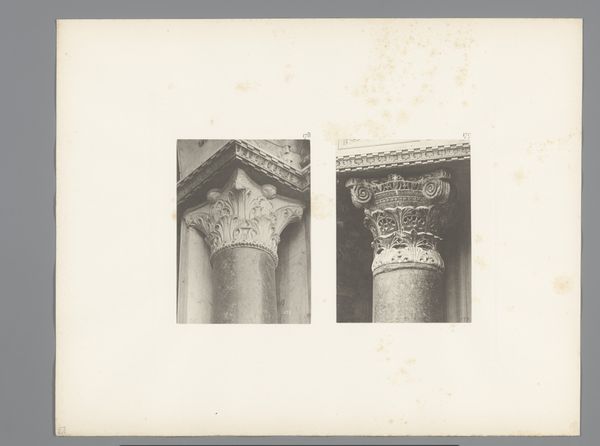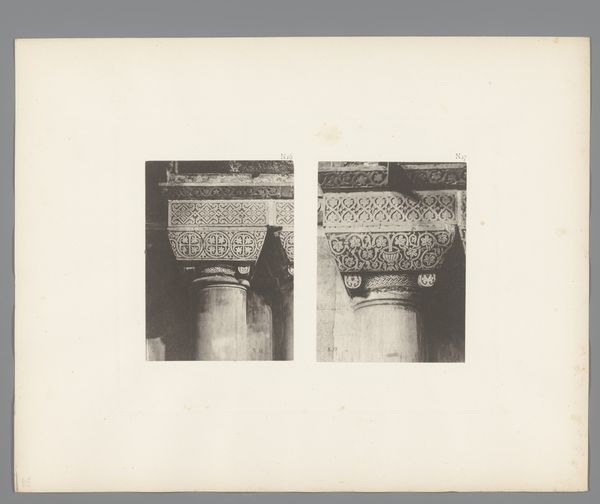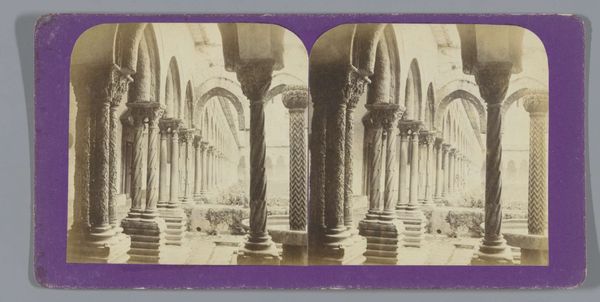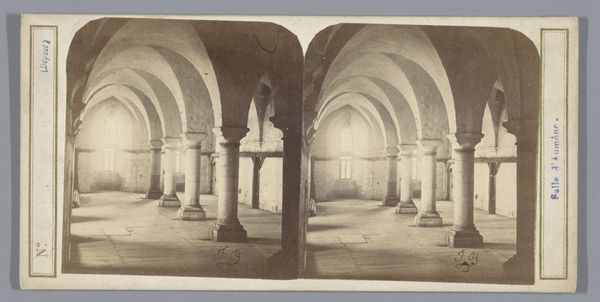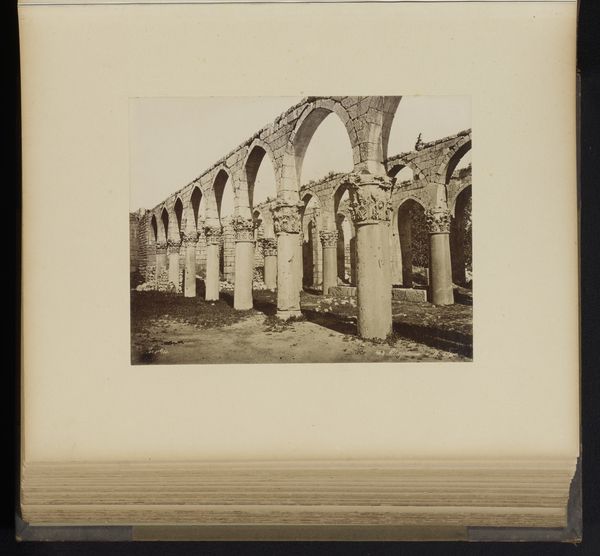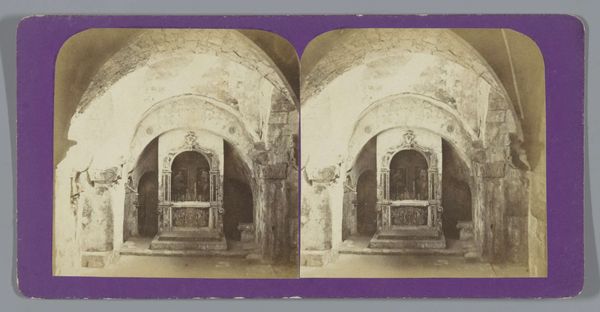
photography, gelatin-silver-print, architecture
#
medieval
#
landscape
#
photography
#
gelatin-silver-print
#
architecture
Dimensions: height 87 mm, width 178 mm
Copyright: Rijks Museum: Open Domain
Editor: This gelatin-silver print from sometime between 1855 and 1868, titled "Zuilen in de crypte van de kapel van kasteel Cheb" by František Fridrich, it has a certain… solidity. The architecture is quite imposing. How do you interpret this work? Curator: Focusing on the formal aspects, the composition utilizes the repetitive verticality of the columns to establish a powerful sense of depth and architectural rhythm. Note the contrast between the rough texture of the stone and the intricate carvings. Editor: The carvings are quite ornate for what I imagine would be a simple crypt. What's the significance of this tension between the refined details and the rustic construction? Curator: It showcases the complex dialogue between structure and embellishment that typifies much medieval architecture. We could analyse the curves within the carved capitals to examine what, in structuralist terms, is being encoded or emphasized. Consider, for instance, the play of light and shadow. Editor: That contrast definitely gives it a sense of gravity. The gradations create so much depth. Are there other key aesthetic relationships worth looking for? Curator: The arrangement of forms creates what one might call a visual syntax, each element working in concert to evoke a particular experience for the viewer. Did this enhance your understanding of the visual presentation, despite not knowing its immediate historical context? Editor: I think so! Breaking down the picture into separate aspects highlights a more complicated dynamic than just surface level architecture. Curator: Indeed. These tangible details make for a very palpable historical impression.
Comments
No comments
Be the first to comment and join the conversation on the ultimate creative platform.
